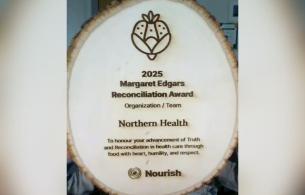The Alliance for a Cavity-Free Future tells me to embrace the dream of a cavity-free world. It’s hard to capture what the burden of dental decay is, but estimates indicate that 35% of the population has cavities, which means 3.9 billion people are affected.
The World Dental Federation states that poor oral health affects our ability to speak, smile, smell, taste, touch, chew, swallow, and convey a range of emotions through facial expressions with confidence and without pain or discomfort. Around the globe, 60-90% of school-aged children and nearly 100% of adults have experienced tooth decay. In fact, dental caries (or tooth decay) are the most common, yet preventable, chronic disease — so what’s the problem and what can we change to make a difference moving forward?
The levels of preventive dentistry
I’ve been working in various levels of preventive dentistry since I was sixteen. Every action I did as a chair-side dental assistant was to help the dentist help people to keep their teeth for their lifetime. My “after school job” turned into my career and I first trained to become a certified dental assistant and then a few years later, a registered dental hygienist. My goal was to work one-on-one with people to support and teach them how to stop cavities in their mouths.
Next, I was lucky enough to move from the private-practice dental world to work in public health at Northern Health. We see at-risk clients and support them as individuals to adopt prevention strategies.
We also target groups and professionals who could share preventive messaging in their work. My career has given me room to grow — from serving the individual client, to serving a population.
I’ve recently grown into a position that supervises dental staff in our region. I continue to encourage dental staff to embrace the dream of preventing cavities in our patients. We often see poverty as an underlying driver of decay, so we look for ways to support and serve them; we advocate for policy changes that support our patients.
Making a difference
Over the years, we’ve made a difference in people’s lives — the staff can tell you rewarding stories of gratitude from the families we serve. However, dental decay is such a big problem that it makes our efforts seem small.
When I discovered that there’s a worldwide body of people championing a cavity-free world, I was very excited! The Alliance for a Cavity-Free Future works together to advocate for good dental prevention practices. They could reach beyond the local dental office and public health sphere and shift dental outcomes in our culture. As Steve Jobs said, “Those who are crazy enough to think they can change the world, usually do.”
The Alliance for a Cavity-Free Future
Here’s some history of this world-changing group: In February 2016, the Alliance for a Cavity-Free Future put on the World Caries Prevention Symposium in Dubai. The event brought together experts from key disciplines, including nutrition, education, behaviour change, cariologists (how-to stop cavity experts), public health, clinical practice, and integrated management of cavities.
These experts came from across the globe to debate and strategize the practical steps to move the world toward a cavity-free state. Researchers report that more and more people around the world are getting cavities.
Some of the group’s goals to stop decay were:
- Educate the whole medical team to champion dental prevention.
- Support the most effective behaviour change models to be used in dentistry, like Brief Action Planning (a short discussion to help people to make a new health goal).
- Experts on cavities think the best way to stop decay is to wait longer between meals, so our mouths have time to rest.
- The same experts also think reducing the amount of sugar we eat to only 10% of our daily calories would help reduce cavities.














Comments